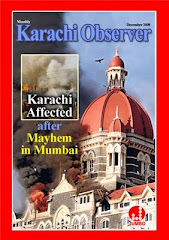* For reasons of geography, ethnicity, military inferiority, and ancient rivalries, Taliban represent neither the threat often portrayed, nor the inevitable victors that the West fears
The Taliban are within 60 miles of Islamabad, it was reported. And David Kilcullen, a counter-insurgency expert, said that Pakistan could collapse within six months. US Secretary of State Hillary Rodham Clinton said if the country were to fall, the Taliban would have the “keys to the nuclear arsenal”. Senator John Kerry warned: “The government has to ratchet up the urgency.”
The military has since launched a major counteroffensive that has sent nearly 3 million people fleeing their homes. Yet Pakistani analysts and officials believe that the infamous threat of an imminent Taliban takeover is overblown.
True, the Taliban threat remains serious. They maintain a presence in more than 60 percent of the northwestern Pakistan and control significant sections along the Afghan border.
But even if the current operation stalls, or the Taliban return to the areas they’ve been ousted from, a Christian Science Monitor report concludes, they may not significantly expand their footprint in the country anytime soon. For reasons of geography, ethnicity, military inferiority, and ancient rivalries, they represent neither the immediate threat that is often portrayed, nor the inevitable victors that the West fears.
“The Taliban have been able to operate in certain [mountainous areas] because of the terrain and the sympathy factor,” says Rifat Hussain of Quaid-e-Azam University. “The moment they begin to move out of the hideouts, they are exposed. If you have 100 truckloads of Taliban on the Peshawar Highway, all you need is two helicopter gunships” to wipe them out.
Coming down from the hills would also expose the Taliban to a more secular, urban world that views them as “a bunch of mountain barbarians”.
It’s a common saying these days that all Taliban are Pashtuns, but not all Pashtuns are Taliban.
The grievances that the Taliban exploit, such as unemployment and tribal feudalism, are not as prevalent even in Haripur. Lush farmland and an industrial centre support relative prosperity.
The notion of a Taliban conquest of Pakistan also bumps up against some simple arithmetic. The Taliban in Swat numbered 5,000, and the total from all factions in Pakistan is estimated in the tens of thousands, at most. The Pakistani military, meanwhile, numbers more than half a million. Until the latest counteroffensive, some analysts questioned the military’s resolve in fighting the insurgency. But the counteroffensive in Swat has convinced many that the Army is serious. The mass displacement of civilians offers grim confirmation of heavy engagement.
The Taliban are within 60 miles of Islamabad, it was reported. And David Kilcullen, a counter-insurgency expert, said that Pakistan could collapse within six months. US Secretary of State Hillary Rodham Clinton said if the country were to fall, the Taliban would have the “keys to the nuclear arsenal”. Senator John Kerry warned: “The government has to ratchet up the urgency.”
The military has since launched a major counteroffensive that has sent nearly 3 million people fleeing their homes. Yet Pakistani analysts and officials believe that the infamous threat of an imminent Taliban takeover is overblown.
True, the Taliban threat remains serious. They maintain a presence in more than 60 percent of the northwestern Pakistan and control significant sections along the Afghan border.
But even if the current operation stalls, or the Taliban return to the areas they’ve been ousted from, a Christian Science Monitor report concludes, they may not significantly expand their footprint in the country anytime soon. For reasons of geography, ethnicity, military inferiority, and ancient rivalries, they represent neither the immediate threat that is often portrayed, nor the inevitable victors that the West fears.
“The Taliban have been able to operate in certain [mountainous areas] because of the terrain and the sympathy factor,” says Rifat Hussain of Quaid-e-Azam University. “The moment they begin to move out of the hideouts, they are exposed. If you have 100 truckloads of Taliban on the Peshawar Highway, all you need is two helicopter gunships” to wipe them out.
Coming down from the hills would also expose the Taliban to a more secular, urban world that views them as “a bunch of mountain barbarians”.
It’s a common saying these days that all Taliban are Pashtuns, but not all Pashtuns are Taliban.
The grievances that the Taliban exploit, such as unemployment and tribal feudalism, are not as prevalent even in Haripur. Lush farmland and an industrial centre support relative prosperity.
The notion of a Taliban conquest of Pakistan also bumps up against some simple arithmetic. The Taliban in Swat numbered 5,000, and the total from all factions in Pakistan is estimated in the tens of thousands, at most. The Pakistani military, meanwhile, numbers more than half a million. Until the latest counteroffensive, some analysts questioned the military’s resolve in fighting the insurgency. But the counteroffensive in Swat has convinced many that the Army is serious. The mass displacement of civilians offers grim confirmation of heavy engagement.





















